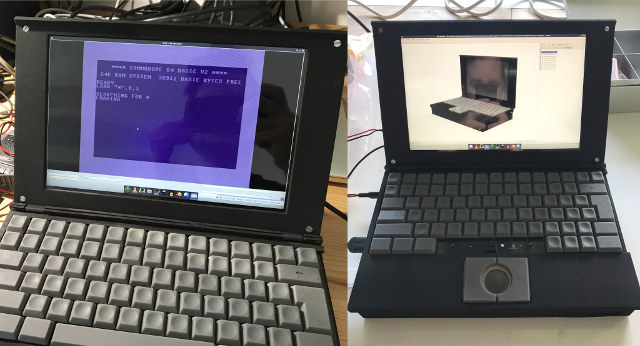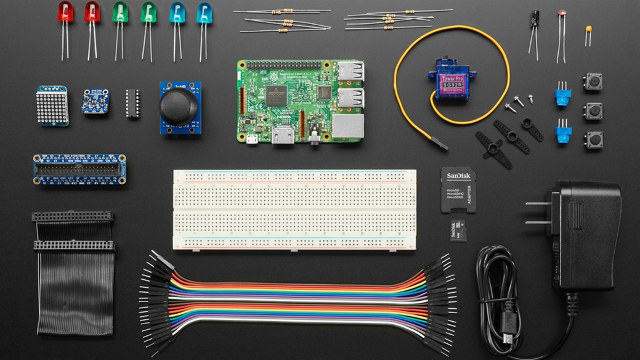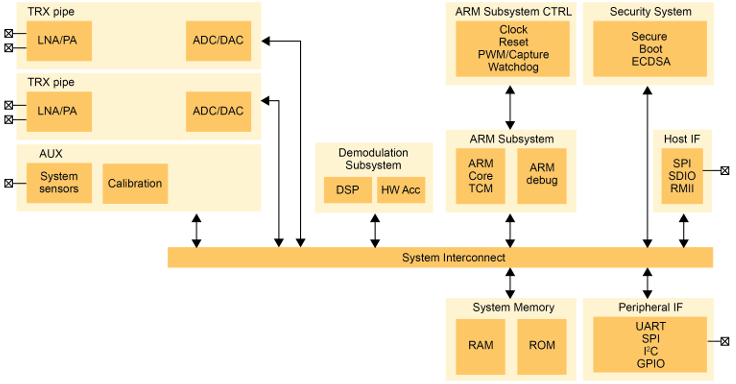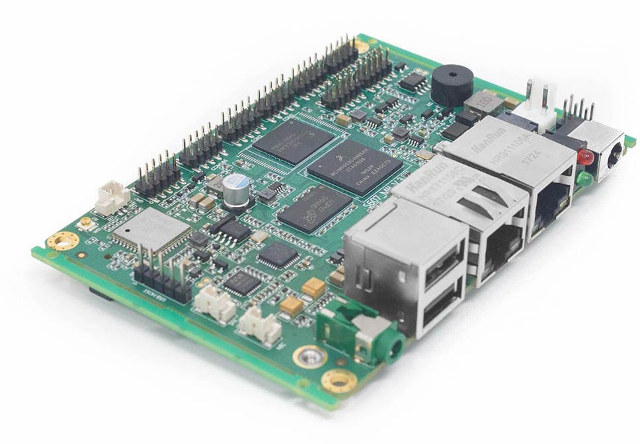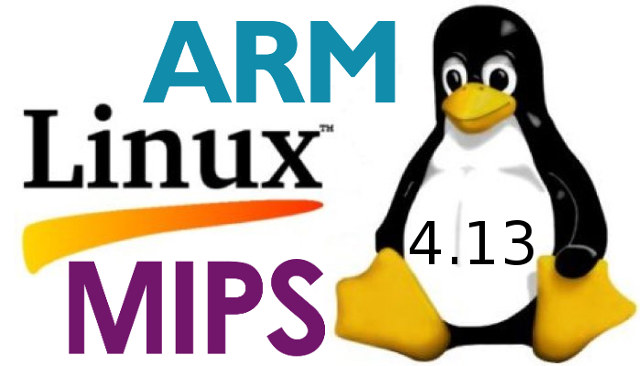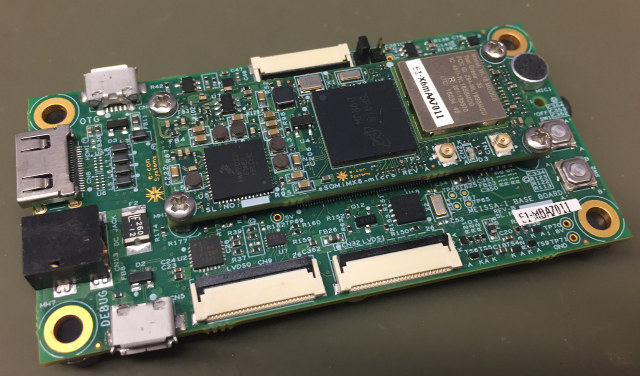The first usable DIY ARM Linux laptop that I can remember is Novena, unveiled in 2014, based on Freescale i.MX 6Quad processor, and fairly expensive at close to $2,000 since it was a nice product. Recently, we’ve had more affordable options with products such as Olimex TERES-I laptop (Allwinner A64), and the second version of Pi-Top laptop shell for Raspberry Pi 3. There may soon be another option as MNT Media and Technology (Lukas F. Hartmann) partnered with an industrial designer (Ana Dantas) to work on “Reform”, a DIY and modular laptop / portable computer powered by NXP i.MX 6QuadPlus quad core ARM Cortex A9 processor, and eventually i.MX 8 hexa core Cortex A72/A53 processor. They are the prototype stage right now, and mostly looking for feedback. The preliminary specifications and features of the Reform portable computer include: SoC – NXP i.MX 6QuadPlus quad core Cortex A9 processor @ up […]
Industrial Shields Industrial Panel PCs are Based on Raspberry Pi, Banana Pi, or HummingBoard
Boot&Work Corp., S.L. is a company based in Catalonia that sells industrial automation electronic devices under “Industrial Shields” brand. What makes their product noticeable is that they all appear to be based on maker boards such as Arduino or Raspberry Pi. The company offers various Arduino based PLC modules with or without Ethernet that can be controlled with 10.1″ industrial grade panel PCs based on ARM Linux development boards. Currently three sub-families are available: HummTOUCH powered by Solidrun HummingBoard-i2 NXP i.MX 6Dual Lite board BANANATOUCH with either Banana Pi M64 (Allwinner A64 quad core Cortex A53) or Banana Pi M3 (Allwinner A83T octa core Cortex A7) TOUCHBERRY with Raspberry Pi model B or Raspberry Pi 3 model B Beside the different processors, the 10.1″ Panel PCs share some of the same specifications: Display – 10.1″ resistive multitouch LVDS, 315 nits, 170° viewing angle, 1280×720 resolution Video Input – MIPI CSI […]
Purism Librem 5 Open Source Linux Smartphone Meets its 1.5 Million Dollars Funding Target
Back in the summer, we reported about Purism Librem 5, a privacy-focused, open source Linux smartphone. The hardware has not been developed yet, at the time the company was still considering either i.MX 6 Cortex A9 processor or i.MX8 Cortex A53 processor for the phone, and asked for 1.5 million dollars in their self-managed crowdfunding campaign to get the phone delivered in 2019. The project was interesting but with the current status for the project, amount to be raised, and delivery timeline, it was a long shot. But it turns out there’s some demands for smartphones outside of Android and iOS ecosystem, and since then, KDE and the GNOME foundation have joined the project leading to more coverage & people getting involved, and Librem 5 phone is now fully funded with 13 days to go. The processor will likely be NXP i.MX 8M Quad quad core Cortex A53 SoC, as […]
Google Cloud IoT Core Enters Public Beta, Various Devkits Available
Back in May, I wrote about Allwinner R18 based Banana Pi BPI-M64 Board with Google Cloud IoT Core support, as Google unveils the new cloud service during Google I/O. However, at the time it was only available to selected partners, and Google has recently launched the public beta making their IoT device management platform available to all. I first learned about this through an ARM community blog post announcing availability of the ARM-based IoT Kit for Cloud IoT Core on Adafruit using Raspberry Pi 3 board, a breadboard, and various modules that can be managed through Google services. But that are plenty of other IoT kits or boards for Google Cloud IoT Core including: Allwinner R18 based Pine A64-LTS, Banana Pi BPI-R18 Marvell based MACCHIATObin, and ESPRESSOBin boards Mongoose OS IoT starter kit with ESP32 board( instead of Raspberry Pi 3) Grove IoT Commercial Developer Kit based on Intel NUC […]
NXP RoadLink SAF5400 is a Single Chip Secure DSRC/802.11p V2X Platform
Marvell unveiled 88W8987xA wireless SoC for V2X (Vehicle to Everything) applications supporting 802.11p WiFi, and DSRC (Dedicated Short Range Communications) last June, but NXP has recently launched Roadlink SAF5400 which it claims to be the world’s first “automotive qualified, high-performance single-chip DSRC modem” Key features for Roadlink SAF5400: Compliant with IEEE 802.11p, IEEE 1609.4 Compliant with: ETSI EN 302663 – Intelligent Transport Systems (ITS); Access layer specification for Intelligent Transport Systems operating in the 5 GHz frequency band ETSI EN 302571 – Intelligent Transport Systems (ITS); Radiocommunications equipment operating in the 5 855 MHz to 5 925 MHz frequency band; Harmonized EN covering the essential requirements of article 3.2 of the R&TTE Directive Compliant with ARIB T-109M – 700 MHz Band Intelligent Transport Systems Single channel handling for 802.11p reception/transmission. Includes Channel Switching Optional ECDSA verification: 2000 messages/sec (Brainpool/NIST curves 256 bits) Qualified in accordance with AEC-Q100 grade 2 Host […]
Habey EMB-2200 Pico-ITX board is Designed for Industrial IoT Gateways & HMI Panels
Habey USA has sent out an email to announce their EMB-2200 industrial grade Pico-ITX board powered by NXP i.MX6UL processor with up to 512 MB DDR3, WIFi and Bluetooth, optional PoE support, LCD interface, etc…, and designed for IoT gateways, HMI applications, and other embedded applications. Habey EMB-2200 board specifications: SoC- NXP i.MX 6UltraLite single core ARM Cortex-A7 processor at 528/696MHz System Memory – 128, 256 or 512MB RAM Storage – Various options of eMMC, iNAND or SLC NAND flash (Default: 8GB eMMC flash) Display – 1x 24-bit Parallel LCD (RGB) interface up to 1366×768, 4-wire touch interface Audio – 1x 3.5mm Line OUT jack Connectivity – 2x 10/100 Mbps Fast Ethernet ports, WiFi and Bluetooth module USB – 2x USB 2.0 ports I/Os – 5x RS-232 header, 2x CAN Bus, 2x USB2.0, 1x USB OTG Configurable GPIO, SPI, I2C Expansion – 1x full-size mini-PCIe with USB connection for cellular […]
Linux 4.13 Release – Main Changes, ARM & MIPS Architectures
Linus Torvalds has just announced the release of Linux 4.13 and a kidney stone…: So last week was actually somewhat eventful, but not enough to push me to delay 4.13. Most of the changes since rc7 are actually networking fixes, the bulk of them to various drivers. With apologies to the authors of said patches, they don’t look all that interesting (which is definitely exactly what you want just before a release). Details in the appended shortlog. Note that the shortlog below is obviously only since rc7 – the _full_4.13 log is much too big to post and nobody sane would read it. So if you’re interested in all the rest of it, get the git tree and limit the logs to the files you are interested in if you crave details. No, the excitement was largely in the mmu notification layer, where we had a fairly last-minute regression and […]
Save Power, Hibernate Your Embedded Linux System
This is a guest post by Tharma Rajan G, Project Lead, e-con Sytems. What is the best way to save power consumption of your embedded Linux system? Is there any way to save max power and resume operation ? Yes. It is ‘hibernate’ mode, one of the Power Modes in Linux. This article talks about how we utilized this ‘hibernate mode’ in our Reference Platform Kit Meissa-I with eSOMiMX6-micro SOM. Meissa-I is a dual board solution that features eSOMiMX6-micro Computer on Module & carrier board. Meissa-I development board runs Linux and Android Marshmallow (under development). eSOMiMX6-micro is based on Dual/Quad core ARM CortexTM-A9 based CPU @ 800MHz/Core. It has 1GB LPDDR2 and 4GB eMMC FLASH (expandable upto 32GB). The eSOMiMX6-micro module also has the Wireless LAN and Bluetooth module. Linux Power Modes Power Management is a key feature in embedded Linux system and there are two types for implementing the […]


